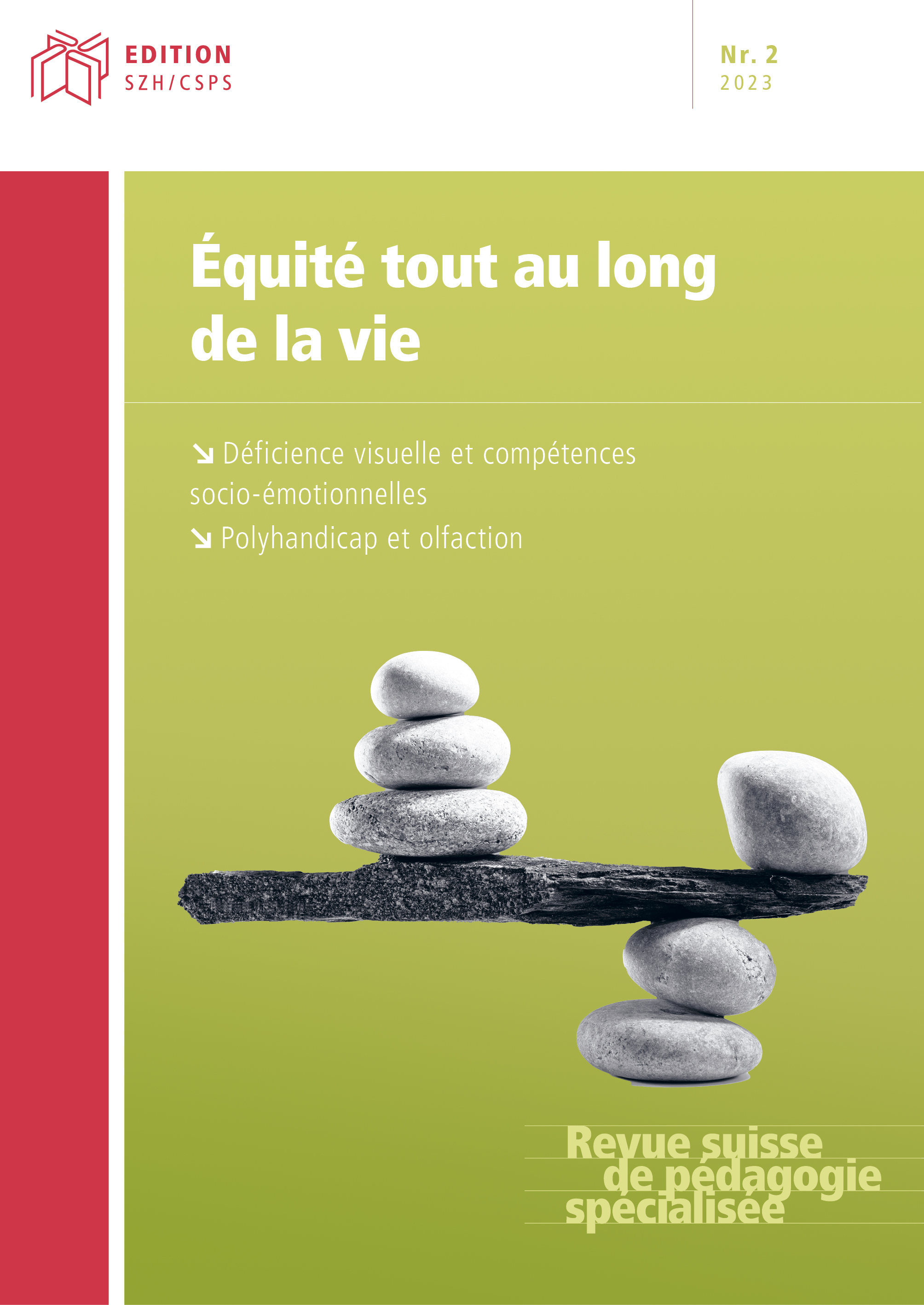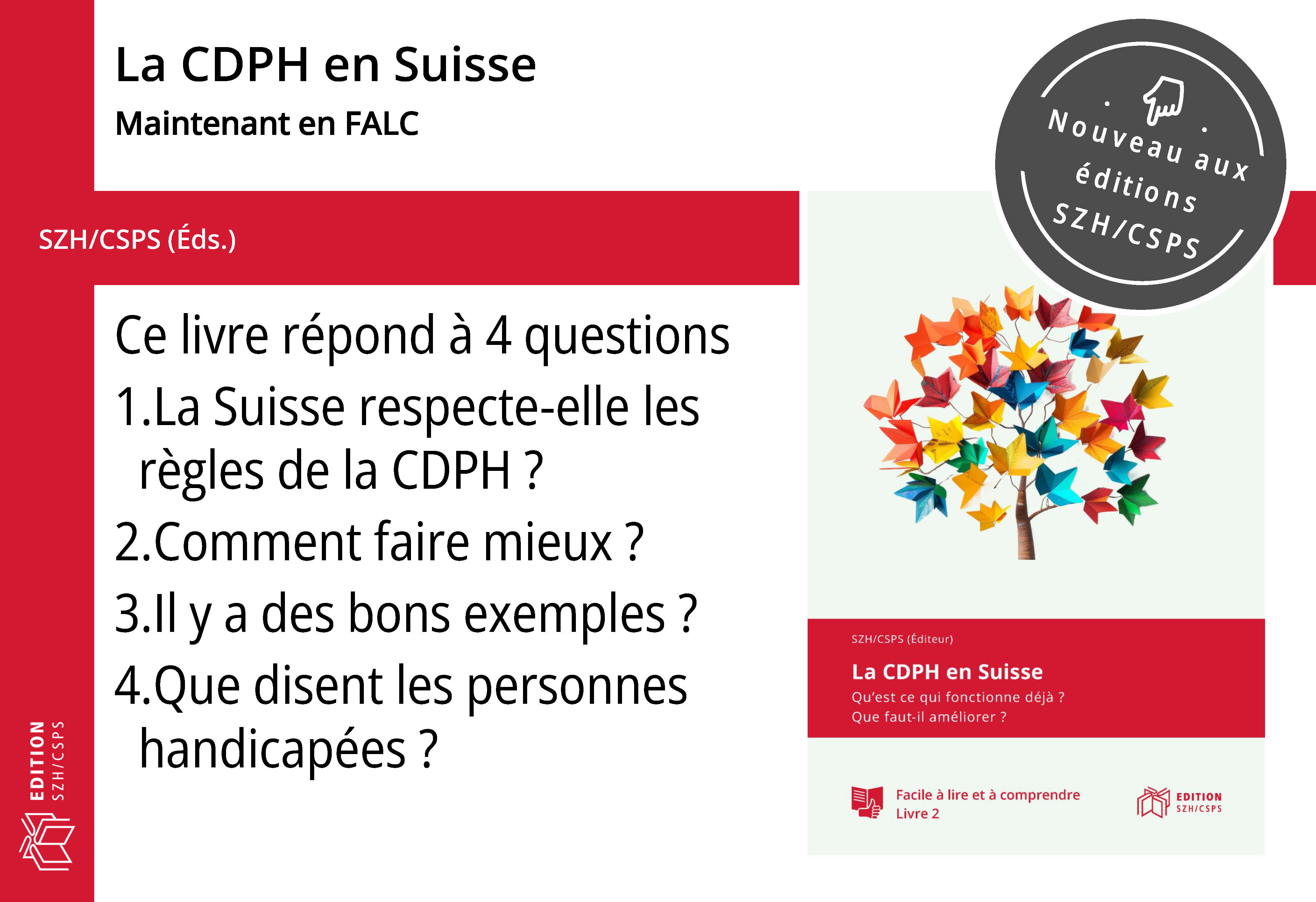Les habiletés olfactives des personnes polyhandicapées
DOI :
https://doi.org/10.57161/r2023-02-07Mots-clés :
habilités olfactives, olfaction, polyhandicap, prise en chargeRésumé
L’olfaction est une modalité sensorielle cruciale sur le plan cognitif et affectif ainsi que pour la qualité de vie des êtres humains. Cependant, ce sens a longtemps été négligé dans le champ du polyhandicap. Trois études portant sur les habiletés olfactives de 20 à 22 enfants et jeunes polyhandicapés ont permis de mettre en évidence leurs capacités à détecter des odeurs, à manifester des réactions de plaisir ou de déplaisir en fonction de la nature plaisante ou non des odeurs, ainsi qu’à s’habituer à une odeur présentée de manière répétée et rapprochée dans le temps. Ces résultats permettent d’encourager les milieux accompagnant ces personnes à utiliser davantage les odeurs à des fins d’étayage affectif et d’apprentissage.
Références
Balez, S. (2021). Puissance émotionnelle de l’odeur dans les lieux. In G.-H. Laffont (Ed.), Ces lieux qui nous affectent : Production de sens, enjeu de connaissance, dimension opératoire (pp. 181–191). Hermann. https://doi.org/10.3917/herm.marto.2021.01.0181
De Blasio, C., Dind, J., & Petitpierre, G. (en révision). Odor hedonics responses in children and young people with profound intellectual and multiple disabilities
Fröhlich, A. (1987). La stimulation basale. Éditions de Lavigny.
Hulsegge, J., & Verheul, A. (1989). Snoezelen, un autre monde. Érasme.
Krusemark, E. A., Novak, L. R., Gitelman, D. R., & Li, W. (2013). When the sense of smell meets emotion: Anxiety-state-dependent olfactory processing and neural circuitry adaptation. Journal of Neuroscience, 33, 15324–15332. https://doi.org/10.1523/JNEUROSCI.1835-13.2013
Marlier, L., & Schaal, B. (1997). Familiarité et discrimination olfactive chez le nouveau-né. Enfance, 1, 47–61.
Nakken, H., & Vlaskamp, C. (2007) A need for a taxonomy for profound intellectual and multiple disabilities. Journal of Policy and Practice in Intellectual Disability, 4, 83–87. https://doi.org/10.1111/j.1741-1130.2007.00104.x
Petitpierre, G., Dind, J., De Blasio, C., & Gremaud, G. (2021). Odour detection in children and youngpeople with profound intellectual and multiple disabilities. Journal of Applied Research in Intellectual Disabilities, 35 (2), 519-530. https://doi.org/10.1111/jar.12963
Petitpierre, G., & Dind, J. (2023). Measuring olfaction in children and young people with profound intellectual and multiple disabilities. In M. Bensafi (Ed.). Methods and Protocols in Food Science (pp. 115–129). Springer.
Rankin, C. H., Abrams, Th., Barry, R. J., Bhatnagar, S., Clayton, D. F., Colombo, J., Coppola, G., Geyer, M. A., Glanzman, D. L., Marsland, S., McSweeney, F. K., Wilson, D. A., Wu, C. F., & Thompson, R. F. (2009). Habituation revisited : An updated and revised description of the behavioral characteristics of habituation. Neurobiology of Learning and Memory, 92(2), 135–138. https://doi.org/10.1016/j.nlm.2008.09.012
Schaal, B. (2022, 14 Janvier). Olfaction et développement de la cognition du jeune enfant. Olfaction et polyhandicap. Le sens des odeurs [Conférence]. Journée d’étude du petit conservatoire du polyhandicap, Fribourg.
Schaal, B., Saxton, T. K., Loos, H., Soussignan, R., & Durand, K. (2020). Olfaction scaffolds the developing human from neonate to adolescent and beyond. Philosophical transactions of the Royal Society of London. Series B, Biological sciences, 375(1800), 20190261. https://doi.org/10.1098/rstb.2019.0261
Schaal, B. (2011). À la recherche du temps gagné : Comment l’olfaction du fœtus anticipe l’adaptation du nouveau-né. Spirale, 59, 35–55. https://doi.org/10.3917/spi.059.0035
Schaal, B. (1997). L’olfaction : développement de la fonction et fonctions au cours du développement. Enfance, 1, 5–20. https://doi.org/10.3406/enfan.1997.3041
Schaal, B., Orgeur, P., & Rognon, C. (1995). Odor sensing in the human fetus: Anatomical, functional, and chemoecological bases. In J.-P. Lecanuet, W. P. Fifer, N. A. Krasnegor, & W. P. Smotherman (Eds.), Fetal development: A psychobiological perspective (pp. 205–237). Lawrence Erlbaum Associates, Inc.
Stevenson, R. J. (2010). An initial evaluation of the functions of human olfaction. Chemical Senses, 35(1), 3–20. https://doi.org/10.1093/chemse/bjp083
Thompson, R. F. (2010). Habituation. In G. F. Koob, M. Le Moal & R. F. Thompson (Eds.). Encyclopedia of Behavioral Neuroscience (pp. 1–5.). Elsevier.
Ustun, B., Reissland, N., Covey, J., Schaal, B., & Blissett, J. (2022). Flavor sensing in utero and emerging discriminative behaviors in the human fetus. Psychological science, 33(10), 1651–1663. https://doi.org/10.1177/09567976221105460
Publiée
Comment citer
Numéro
Rubrique
Licence
© Geneviève Petitpierre, Juliane Dind 2023

Ce travail est disponible sous la licence Creative Commons Attribution 4.0 International .




